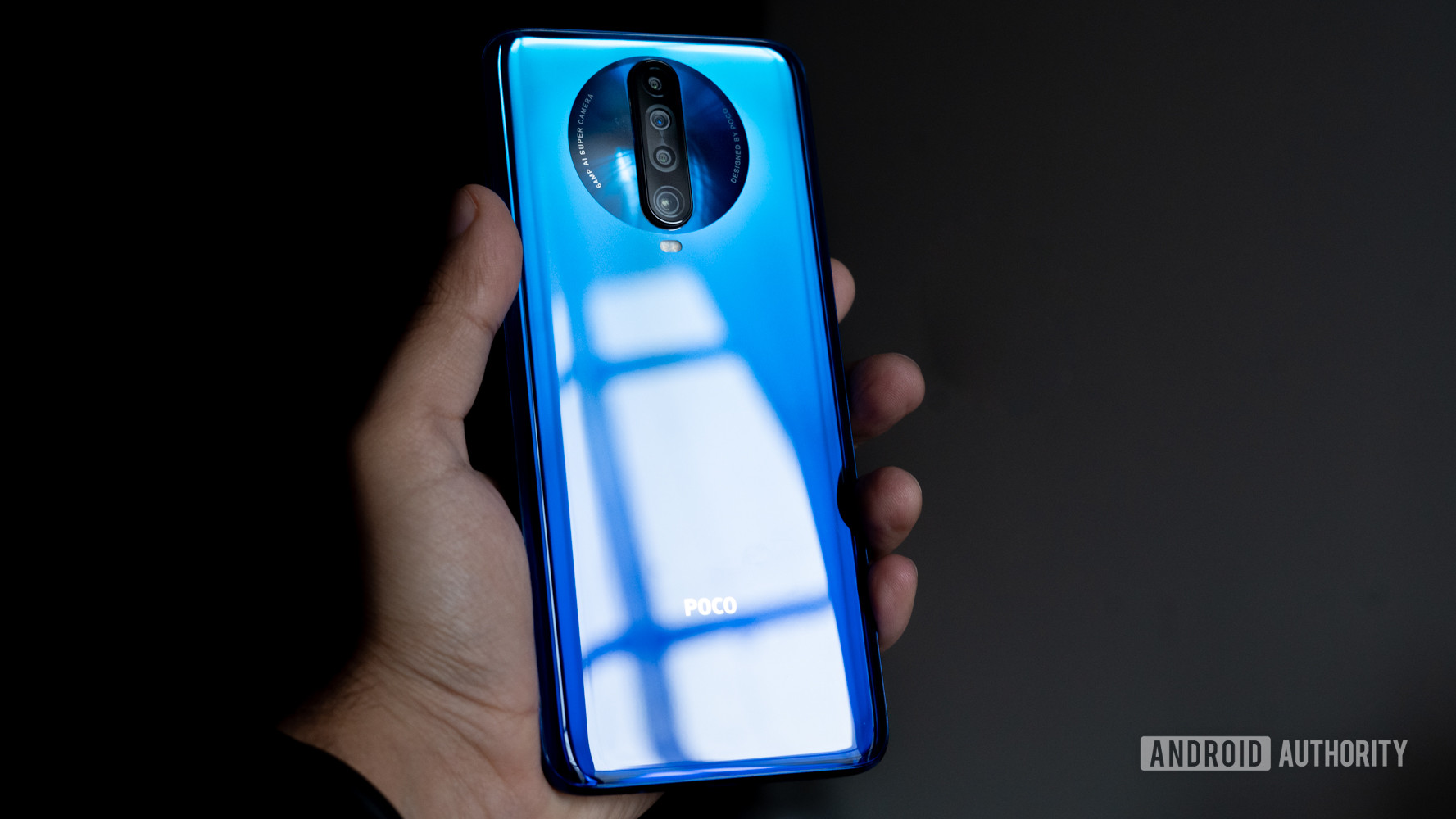
With over 158 million smartphones shipped in 2019, India is indisputably the second-largest smartphone market in the world. As sales plateau in China, manufacturers have been looking at new ways to grow their market in India.
Xiaomi’s idea was to create differentiation in order to cater to diverse audiences looking for very different things from their phones.
A major part of this strategy has been the advent of sub-brands. While the concept originated in China, it has really taken hold in India. Usually aimed at a specific demographic, sub-brands operate independently and tend to be more open to experimentation compared to the generally risk-averse brands they operate under.
Despite being the largest smartphone player in India, Xiaomi has split up its business across multiple brands. Early in 2019, Xiaomi spun off Redmi into a unique entity of its own. Meanwhile, 2020 started off with Poco being resurrected as a self-operating entity.
Across Xiaomi’s three brands, we are beginning to see overlapping hardware that often competes at similar price points. Case in point, the Redmi Note 8 Pro and the Poco X2 are similarly priced, and yet, they are fundamentally different products. Meanwhile, the Poco X2 is virtually identical to the Redmi K30, which is available in China, but may not launch in India at all.
Why would Xiaomi introduce products that face off against each other? What do its sub-brands stand to gain from it? More importantly, why did Xiaomi spin Redmi and Poco into separate operations at all? Let’s talk about how Redmi, Poco, and Mi fit into the big picture.
What’s with all the sub-brands?
Founded in 2010, Xiaomi is the umbrella corporation under which all the sub-brands operate. While the company built its reputation on value-priced smartphones, it has made steady progress to broaden its portfolio to cover a multitude of price bands and segments.
Xiaomi’s phones in the last few years have shown a proclivity for diverse designs, and an upward shift towards competing with the flagships of the world. Despite being a concept, the Mi Mix Alpha presents a clear indication of the direction that the company is headed in. The recently revealed Xiaomi Mi 10 Pro is the most expensive device in the mainstream Mi family yet.
Brand identity and positioning are key.
However, Xiaomi’s bread and butter is the affordable Redmi series. This presents a problem. Brand identity and appearances are key. For the longest time, Xiaomi has been labeled as a manufacturer of cheap hardware, or devices that give you a great bang for the buck. This is at odds with its future plans of making high-end, premium hardware. Xiaomi needs to shed its image of being a value player, and sub-brands are the right tool to enable that.
The India story
In many ways, Xiaomi’s strategy in India has taken inspiration from China. Yet, the country brings with it its own challenges. When Xiaomi entered India in 2014, the average selling price for a phone was just $138. This was the beginning of a transitory phase with users upgrading from feature phones and the advent of affordable 4G.
As smartphone shipments in India grew from 17 million units in 2014, to 27 million units in 2017, Xiaomi was able to piggyback on this rise and become the leading player in the entry-mid-range smartphone segment.

While the Mi 3 was Xiaomi’s first phone in India, this was fast superseded by a steady stream of Redmi phones. These Redmi-series devices decimated the local competition through aggressive pricing. Micromax, Lava, and others put up a strong fight but just couldn’t keep up with the products Xiaomi could offer, bankrolled by its success in China.
Alongside many Redmi phones, Xiaomi introduced the Mi 4i, Mi 5, and eventually, the Mi Mix. These, however, were not affordable phones. The Redmi-series was what sold by the truckloads. In terms of market perception, Xiaomi was now synonymous with Redmi, the value segment brand. Fast forward to early 2019, and Xiaomi made this official. Redmi became a separate sub-brand.
By Q3 2019, the average selling point of smartphones in India had increased slightly to $159. Even today, India continues to be a value-conscious, mid-range market for the most part. However, the $300-$500 segment, as well as the $200-$300 segment to a lesser degree, show points of inflection.
Now, the $300-$500 segment in India has been the mainstay of OnePlus. The brand has managed to become the de-facto choice in this price range, on the back of reliable hardware and a history of long-term software support. Of course, Xiaomi wants a piece of the pie.

Xiaomi has previously tested out this market with the launch of a little experiment called the Poco F1. At its launch in August 2018, the Poco F1 was a bit of an anomaly. A sub-$300 phone that packed flagship-grade hardware, albeit with a few compromises. The market lapped it up.
The Poco F1, known internationally as the Pocophone F1, demonstrated that there was space for a higher-end piece of kit, at the right price. Moreover, it gave Xiaomi impetus to introduce the Redmi K series in India.
The K20 and K20 Pro capitalized on Redmi's brand awareness to enter the upper mid-range and value flagship segment.
Offline stores still drive the majority of sales in India, and the Redmi brand is king in these stores. In India, Mi-branded phones just don’t have the kind of brand awareness to pull in numbers in the value-flagship segment. The Redmi K series solved that problem for Xiaomi. The company introduced the Mi 9T and Mi 9T Pro in India as the Redmi K20 and K20 Pro.

Shipping in two versions, one with a Snapdragon 730 chipset and the other with Snapdragon 855, both phones were much more expensive than the Poco F1 but still managed to rack up decent sales. Going up against OnePlus and even Asus, Xiaomi got a decent momentum going despite being a response, rather than something utterly unique.
Where does Poco fit in?
By all measures, the Poco F1 was a resounding success and the market has been clamoring for a successor. The Poco F1 built its reputation on long-term software support and by embracing the ROM community. Meanwhile, the Redmi K series produced some great hardware, but it really did not cater to the same audience.
Despite its success, in the 18 months since the launch of the F1, rumors suggested that the project had been shut down. So you can imagine our surprise when Xiaomi decided to spin off Poco into its own entity in early January 2020. New hardware was finally on the way.

However, the Poco X2 wasn’t quite the phone everyone was waiting for. A rebadged Redmi K30, it shifts the focus from the spec sheet to a broader sense of customization and speed. Sure, it has the cool new 120Hz display to differentiate itself, but for users who were conditioned to top-of-the-line specs, this alone just won’t cut it.
What the Poco X2 does do is make space for a more expensive successor to the Poco F1. By tackling the mid-range segment, the X2 bolsters the Poco brand through additional offerings, all while catering to the most lucrative mid-range segment.
And what about the Mi series?
In India, higher-end Mi series phones haven’t seen much success. Early on in its India expansion, Xiaomi focused on the core sub-$200 segment to such a degree that the brand was solely viewed through the optics of the Redmi series. It worked out well when that was the largest growing market category. However, in 2020, there is a clear and demonstrable demand for phones in the $400+ segment, which is currently dominated by OnePlus, Samsung, and others.

By segregating Redmi and Poco, Xiaomi is now free to explore the value-flagship segment, and beyond, with the Mi brand. There is clear segmentation in Xiaomi’s strategy now, and it positions the Mi brand perfectly to go up range.
However, making such a device requires state of the art facilities, which are not available in India.
We will have to import 100% of units if we launch the #Mi10 in India. Hence, it will have a different pricing model than usual.
RT
with #Mi10 if you want to see it in India. https://t.co/FbRGe4tvjL
— Manu Kumar Jain (@manukumarjain) February 13, 2020
It is, of course, open to speculation, but it’s easy to envision that the Mi brand could be kept aside for cutting-edge devices that don’t necessarily focus on value. The Mi Mix Alpha comes to mind. And Xiaomi’s Manu Kumar Jain has already hinted at the Mi 10 making its way to India.
Could this be the beginning of Xiaomi’s foray into truly high-end hardware with a price to match?
Xiaomi in 2020: A clearly defined strategy

Xiaomi’s strategy in India is unique because of prevailing market conditions. The company has succeeded by tailoring itself to market trends and by delivering a sense of value that few other brands have been able to match.
In Europe and the UK, the company does not have the baggage of building its reputation on value-segment phones. As such, Xiaomi’s still relatively recent European expansion has a very clear-cut identity, with the Redmi brand being retained solely for sub-£200 hardware. Anything above goes on sale with the Mi badge. The strategy is working, too.
Redmi, Poco, and Mi cater to a very diverse and distinct audience individually, while offering something for everyone.
Overall, Xiaomi has entered 2020 with a very defined vision for the future that should let it compete at all levels without significant overlap. Each sub-brand caters to a different market demographic. Redmi is, of course, the most popular, especially in emerging markets, due to its focus on providing value. Meanwhile, Poco caters to the enthusiasts and we should expect to see a Poco F2 sometime in the future. Finally, with the Mi brand, Xiaomi is free to explore the upper reaches of the smartphone market.
What is your opinion on Xiaomi’s sub-brands? Does it make a difference in your perception of the company? Let us know in the comments section.
More posts about Xiaomi
from Android Authority https://ift.tt/2SO4wEp













No comments:
Post a Comment